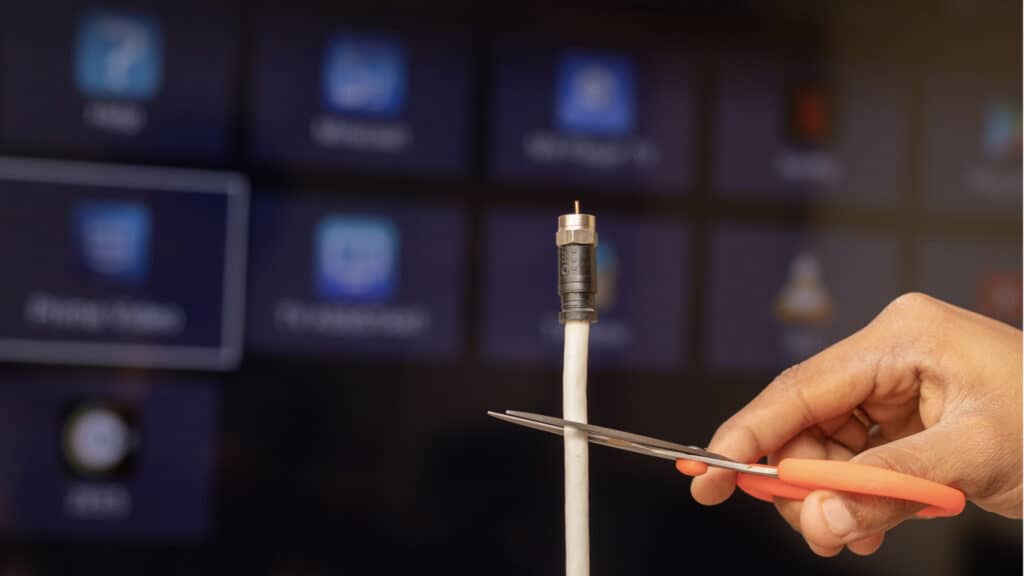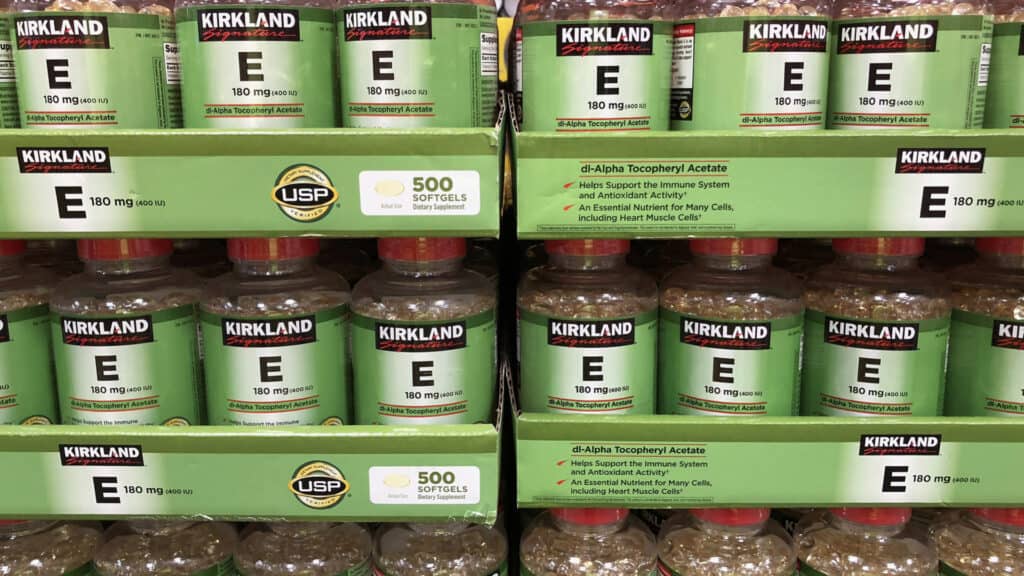Humans adore quick, cost-effective purchases, but how much money do they really save over time? Which daily resources appear to save you a ton of money but actually wipe away funds? We’ve compiled a list of items that cost someone way more than anticipated upon purchase. Do you waste your money on any of these purchases?
1. Water Bottles

The idea of purchasing a human necessity takes advantage of the human desire for convenience. Few places charge for water since almost everywhere provides free access to a fountain or a spigot with tap water. Nonetheless, humans notice an easy, effective alternative to lugging around a large water bottle, so they purchase a single-use, plastic container of spring or purified H20. The location determines the price of the water. For example, music venues or festivals charge around five dollars, while a gas station charges a dollar per bottle.
Switching from plastic to a reusable water bottle increases health benefits as consuming liquid encapsulated in plastic releases BPAs. Also, using refillable water bottles aids the environment. One less disposed plastic water bottle translates to one less plastic water bottle littering the public roads or the oceans.
2. Cable

If you can’t name how many cable channels you watch on one hand, it’s time to make the switch. Years ago, cable was the sole form of media entertainment, with limited channels and scarce programming options. Today, subscription services, live TV companies, and social media platforms populate public consumption, offering a new choice.
Streaming services offer millions of programs to entertain the public, while live TV offers real-time news and sporting events and the pay-what-you-use option—an unparalleled decision for many media consumers.
3. Energy Bills

Charging an iPhone overnight, leaving a computer plugged in all day, and leaving lights on in every room of the house for animals during a vacation all increase the price of an energy bill. Though you aren’t using the plugged-in electronic, the voltages transmitted from the outlet to the gadget run up the energy bill.
To avoid an astronomical energy bill, leave the necessary appliances plugged in, but minimize unnecessary electric output. So, unplug charged items, turn lights off when not in rooms, and if you live in a country or state with bearable outdoor temperature, open the windows, crack the doors, and turn off the air or heat.
4. Dryer Sheets

Storebought dryer sheets contain many chemicals and harmful substances that irritate sensitive skin or stain clothes over time. Plus, using a single dryer sheet per load of laundry contributes to the world's waste problem. We may not all strive to be Greta Thunberg or protest at every climate event, but we can minimize our wasteful contributions with slight changes.
Dryer sheet substitutes (which won’t irritate skin or add to the single-use issue) are wool balls, white vinegar cloths, baking soda, or aluminum foil. Each option contains fewer chemicals than commercial dryer sheets and soothes the skin.
5. Subscriptions

Subscriptions sneak their way onto credit card statements. The promise of a discounted trial tricks people into thinking they’re saving money when logistically, the subscriber forgets about the subscription before the trial or discounted period ends and loses a sum of cash. Now, signing up for a subscription you adore and use is worth it, but signing up for something you wouldn’t without the discount is where the marketing schemes trick the general public.
Pore through billing statements, emails, and anything denoting which active subscriptions reduce income and decide which ones to keep. Chances are there are a few you forgot about.
6. Delivery Fees

One time, I placed an Uber Eats order from my favorite Hibachi establishment. I ordered a simple veggie hibachi that runs for a typical $14 when dining in. Plus tip: I dole out around $20 during the dining occasion. For some reason, I decided to redownload Uber Eats (we manage an on-and-off again relationship) and place an order for the hibachi.
My total equated to $32 with the service fee, delivery fee, and tip. The order took an hour to deliver and arrived reeking of smoke and lukewarm. Unfortunately, the carless community finds few options for delivery or takeaway food, so delivery services capitalize on that demand. Economics 101. For a better alternative, research places with their own delivery services or places nearby without extravagant fees.
7. Name Brand Ingredients

Are you a part of the guilty party who purchases name-brand items for familiarity purposes rather than research? You peruse the grocery aisles, tossing every name-brand finding into the shopping cart, paying no attention to the price disparity between generic and big-name brands. I’m guilty of this as well. I believe our collective society fosters an inherent belief that brand names are superior to generic ones. However, I know the sum of money saved when resorting to generic brands.
Medication is a great example of wasted money. According to the renowned research institute, Johns Hopkins, generic medications cost around 80 to 85% less than name-brand options. At a national level, these savings could repocket $36 billion into American’s pockets.
8. Movie Theater Snacks

Without a movie theater subscription or a quick jog to the Dollar Store before the film, movie theater concessions upcharge whatever they feel at their concession stands. Despite individuals sneaking in food and drinks, movie theater concessions only battle each other. Once a patron purchases their ticket and passes through the ticketing agent, they’re stuck in the dystopian concession stand line.
The allure of eating and drinking during a movie yanks in most moviegoers, promising them comfort during their viewing experience. It's a temptation, yes, but if you hold out for a few hours and eat before or after the movie, the need to ruminate about the person in front of you hearing you chew falls away.
9. Wrapping Paper

At first glance, wrapping paper might not exceed a budget allotted for gift-giving season, but picture how many times you under or overestimate how much material needed to cover gifts. When you overestimate, do you cut the paper remnants off and dispose of them? Do you slap them on a new present? How much of your wrapping paper ends in landfills after its single-use glory?
Out of the nearly 5 billion pounds of wrapping paper distributed yearly, an estimated 2 million falls into landfills, further polluting the Earth. Save the money spent on wrapping paper for finer purchases and the resources used in its production, and use newspapers, reusable bags, fabric, and pillowcases for creative, reusable gift wrap.
10. Coffee

A popular coffee meme illustrates two windows. The left window reads “coffee made at home” with one customer, and the right window reads, “$7 coffee made by a bisexual,” with an endless line trailing in front of the window. The meme pokes fun at humankind’s preference for someone else creating something we could make ourselves.
Though the storebought coffee costs around three or four times more than a homemade, sweltering cup of joe, the majority vote favors a barista’s creation. However, nixing that added expense can save hundreds to thousands of dollars annually.
11. Doggie Bags

Copious dog owners buy into the ruse of a compostable, bio-degradable, USDA certified promise of a green doggie bag, believing their dog’s excrement assists the Earth and reduces the landfill contents. However, for these bags to break down, they must be deposited into a safe, well-run composting facility as opposed to a traditional trash can. So, investing loads of money into these “eco-friendly” bags gives a false sense of environmentalism.
Other options for doggie bags encompass paper bags, grocery bags, newspapers, or pooper scoopers. For extreme environmental precaution, spray the fecal matter with white vinegar or use the excrement as fertilizer.
12. ATM Fees

When caught in a situation where you need cash but aren’t around your normal bank ATM, what do you do? Do you dole out an extra $10 for an ATM fee to grab quick cash? Do you drive around searching for your bank’s branch? Or do you go home, upset with the ATM fees and unwilling to eke out that money for a withdrawal?
ATM fees range depending on their location. I’ve been to festivals with $10 ATM fees and restaurants with $3 ATM fees, yet using these machines repeatedly empties a wallet at a brisk rate. Always carry cash or stop at your bank's ATM before an outing.
13. Fast Food

Discount menu items like McDonald's $1, $2, and $3 menus fool customers into thinking they’re receiving a good deal on quick, efficient food. The issue arises when these menu items don’t provide any nutrition or satiate hunger, so the customer returns for more food. Again, we have corporations tricking patrons into spending more money by believing they’re saving a fair portion of their paycheck.
Pulling up to a drive-thru window hungry also causes customers to spend more money than they would since everything looks tasty. If you’re trying to feed your family, you’ll donate about $30 to $40 when a home-cooked meal costs less and nourishes the body better.
14. Clothes

Over a billion pounds of fast fashion clothing items end up in landfills every year. A combination of capitalism, greed, and incessant desire to buy into new trends contribute to the landfill issue. Fast fashion seasons switch out fabrics and cheap-made clothing every few weeks, ditching the previous season for a new set of indisposable clothes that tear after a few wears.
A lot of shoppers spend a ton of money on clearance items or discount racks because of the simple fact the item is cheaper than it once was. This does not save money. You think you’re saving money because the item is cheaper, but would you wear it if it wasn’t on sale? Pop over to the local thrift store and invest in well-made clothes to pair with multiple outfits to save money on fashion.
15. Disposable Razors

Disposable razors work for a few shaves before dulling into unusable blades fit for the trashcan. Disposable razors provide an okay shave but likely cause razor burn and other irritating skin conditions. A four-pack of disposable razors ranges from $3 to $12.
Safety razors have sharp blades that yield smooth skin post-shave and limit razor burn and other skin irritations. They last longer than disposable razors, though they are more expensive. Investing in a trusty safety razor saves money and protects your skin in the long run.
16 Household Items That Are Costing You Tons in Electricity

Out of all the household utilities, electricity causes the most headaches and one of the biggest dent in consumers' wallets. However, electricity is a necessity that makes life comfortable since so many devices around the home require it.
16 Household Items That Are Costing You Tons in Electricity
12 Easy Ways to Trick Yourself into Building Your Bank Account!

How many times have you tried and failed to save money? Putting away those extra dollars when working on a tight budget can be challenging. But it doesn't have to be so difficult – with the right strategy and some clever tricks, saving money can become easier than ever!
12 Easy Ways to Trick Yourself into Building Your Bank Account!







